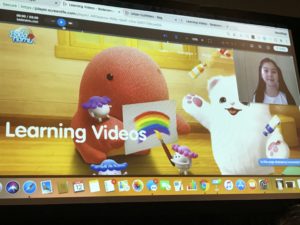
A new kind of storytelling is emerging alongside virtual and augmented reality—screen reality. At South by Southwest on Monday, a panel made up of film experts explained this groundbreaking new format that goes beyond the limits of a single image screen.
The panel was led by film director and producer Timur Bekmambetov; Susan Bonds, CEO and president of 42 Entertainment; Majd Nassif, project manager at Bekmambetov’s film company Bazelevs and Mikhail Zygar, founder of Future History, a documentary series that uses screen reality.
Screen reality uses a new film language called screenlife language. This language is a story that takes place entirely on a computer or phone screen. As society has moved toward spending a lot of time on screens, the audience will find this new language intimate and relatable, Bekmambetov said.
Videos implementing screen reality and the screenlife language contain interactive content as well. People can participate directly in the experience as they are ingesting it.
“What happens on a screen in screenlife is more important than the face of the actor,” Bekmambetov said.
To show an example of this, a video was played showing a texting exchange between a guy and girl. The girl started off the conversation, and the guy kept censoring his response before sending it, typing something similar to, “How’s it going?” then editing it to, “How’s it goin’,” then deleting that and the cursor blinked in the text field while he was seemingly thinking over what to type. The girl replied that she could see him typing a text message. He hesitated a moment and then simply responded, “Hey.”
“We understand immediately what is happening on the screen and the relationship between the characters,” he said. “It’s very minimalistic, but a very, very powerful tool.”
At the beginning of the panel, a video was shown of a learning program called Badunamu which implemented screenlife language. In the video, a child explains to the audience about the series and how to interact with it. An audience member can play and click around with the Badunamu website features while following along. The site shown in the video is currently live, if you want a taste of screenlife language and screen reality, check it out here.
The video is part of Bekmambetov’s new software, Screenlife Recorder, which is in beta testing. This software allows for people to make interactive recordings of their screen, and can be edited and shared. There’s a variety of use cases from films to news to tutorials to games and more.
“We spend most of our time on screens, it’s where most of our action happens,” he said. “For storytelling, most of our choices are made on screens. Because we spend half of our lives on screens, it means the stories about us about today’s people should happen on screens.”
During the panel, Zygar showed a clip of his video project, explaining the year 1968. The video takes place entirely on a screen and is meant to be watched on a mobile device. Check out a clip of the video played during the session, which is also a good representation of screen reality and screenlife.
Bonds said the technology allows the audience to uncover the story and that it could have a variety of uses.
“This could be a powerful tool for advertising,” she said. “It could be a powerful tool for branded content. It could be a powerful tool for education. I think that this platform, in addition to filmmaking has a lot of potential for interactive storytelling, and without leaving the screen be able to give people a different perspective.”
